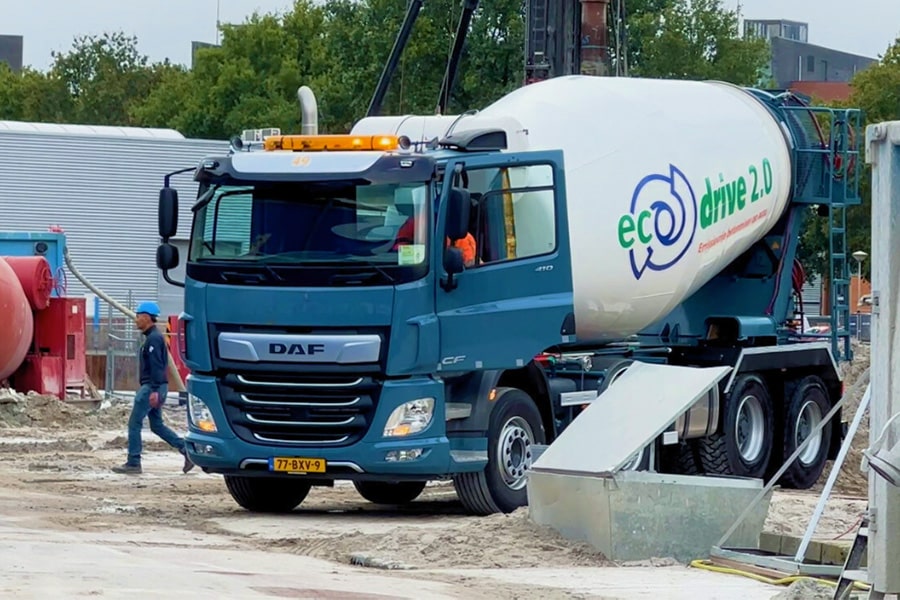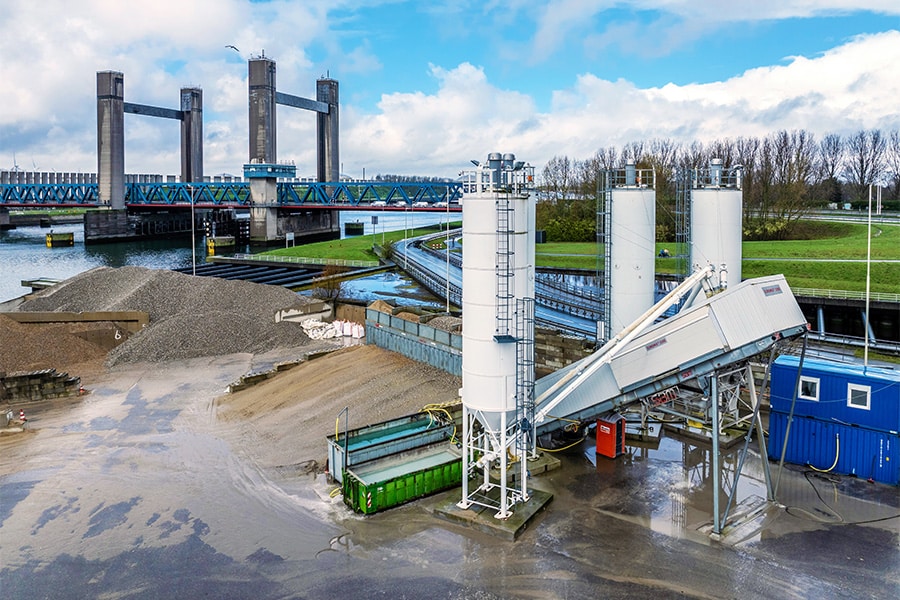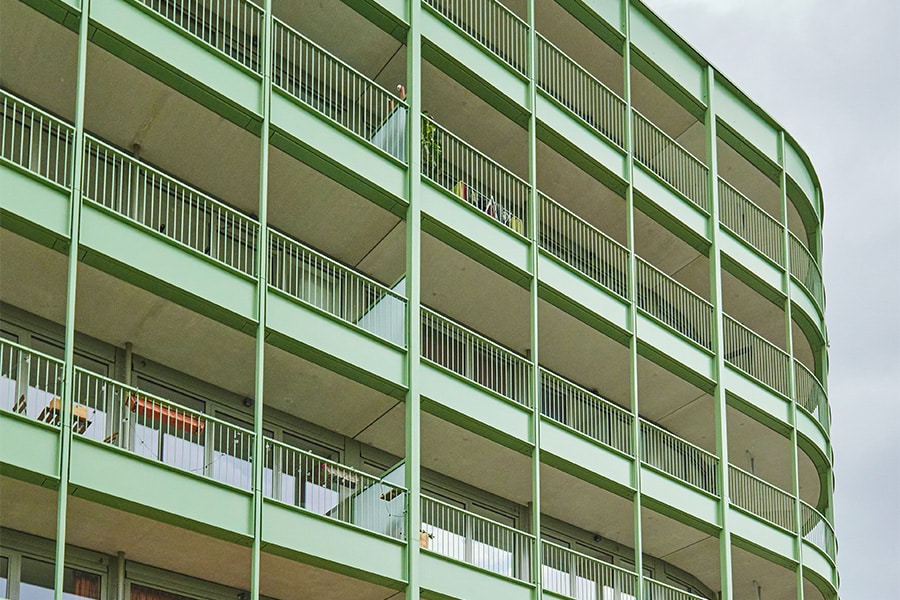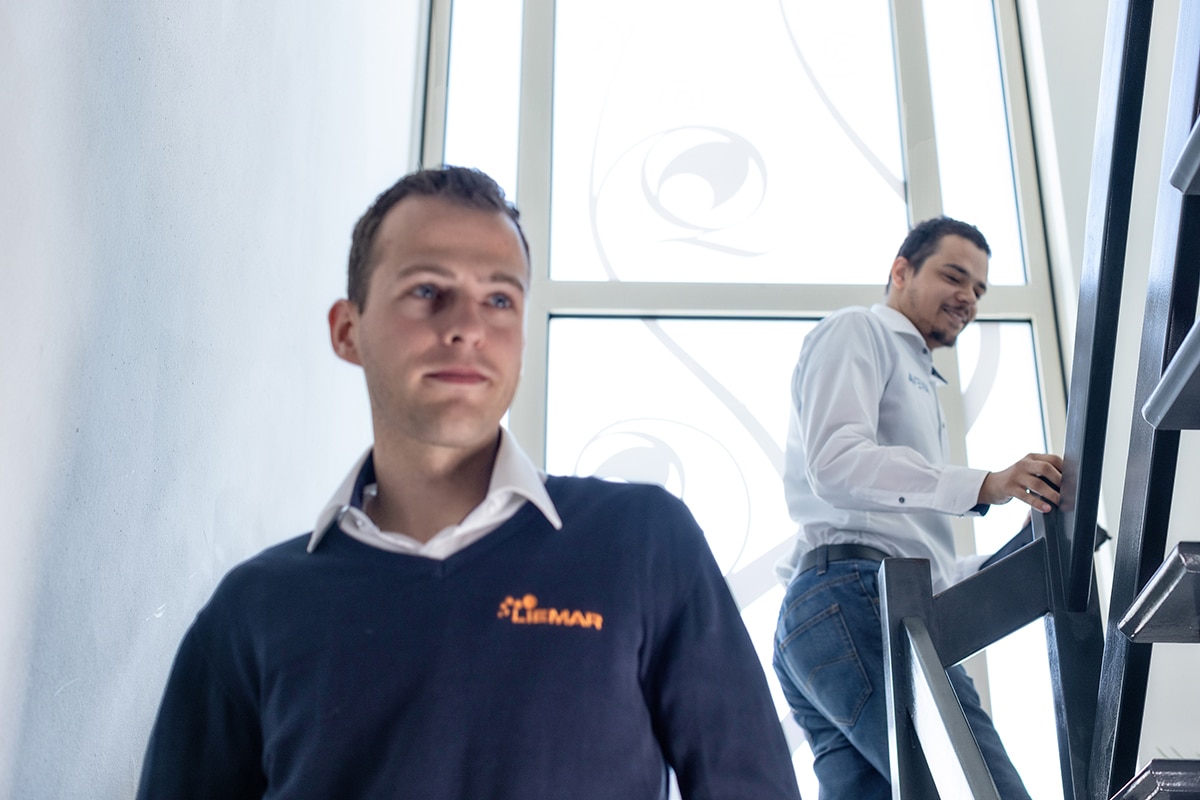
THE SILO: a new overcoat of galvanized steel for concrete grain silo in Copenhagen
The Nordhavn port area in Copenhagen has been undergoing a transformation process for several years. In addition to a new terminal for cruise ships, the district will in the future provide living and housing space for more than 40,000 people. In addition, about 40,000 more people will work there in new offices and business premises.

In 2018, a 50-year-old grain silo was transformed into an apartment complex. The landmark, visible from afar, was transformed into a luxury residential high-rise by Danish firm COBE: THE SILO. For this purpose, the concrete mastodon was "draped with a new overcoat" of galvanized steel. 40 apartments of different sizes were created, integrated into the existing silo structure with its 17 floors. The sizes of the apartments range from 80 to 800 square meters. Each apartment has a panoramic view of the Copenhagen skyline and the Öresund.
A sculptural and complex façade geometry allows cantilevered balconies, which give the rugged concrete an ever-changing pattern at any time of day. The cladding and substructure of the complex façade and balconies are made of hot-dip galvanized steel. In the balcony balustrades, the steel sheets were perforated before being hot-dip galvanized, creating semi-transparent graphic effects.
In addition to the 38 apartments, two publicly accessible functions were added; a space for events and exhibitions on the ground floor and at the top a glass floor with restaurant.

Cladding and galvanizing
For the cladding itself, COBE sought an "honest," "vibrant" material that would resonate with Nordhavn's industrial heritage and carry the existing spatial qualities of THE SILO. Perforations in the architect's pre-designed steel cladding provide great views from the apartments, but also maintain privacy for the residents inside. They also add an extra texture - making each perforated panel slightly different from the next.
The choice of galvanized steel sheets (to EN ISO 1461) was not easy. Given the surrounding sea air, the exposed position and the risk of physical damage to the coating, corrosion was a challenge from the start. The client and contractor, NRE Denmark, wanted to use aluminum because he found it cheaper and easier to install. The client commissioned the Force Institute, a private organization in Denmark that researches building materials, to study and research the pros and cons of both materials (steel vs. aluminum) in their various forms - durability, required coatings, possible fixings and cost. It compared ordinary steel sheet with discontinuous hot-dip galvanized steel, pre-galvanized sheets, aluminum sheets and aluminum treated with different types of zinc coatings.
A 1:1 prototype of the different cladding options was also created to support the decision-making process, which is also part of the requirements for obtaining a building permit for tall buildings in Copenhagen. The prototype facade, which also looked at possible colors of the glazing frames and the possible sizes of the rainproof panels, tested the different material options to compare them aesthetically and in terms of durability, over a period of six months.

Sustainable choice
The choice of discontinuous hot-dip galvanized steel cladding was based on the more interesting, playful and vibrant character of the material, the comparative costing and the Force Institute's advice on life expectancy.
The study concluded that the target life of discontinuous galvanized steel could be achieved by careful selection of the base steel to ensure a slightly thicker coating. Steel with a specified minimum silicon content was used for the 3 mm thick cladding sheets in order to achieve a zinc coating thickness of at least 100 microns. Should an even longer service life be required, the galvanized cladding panels could be removed and re-galvanized at a later date. Discontinuous galvanized steel was chosen instead of pre-galvanized sheets to prevent exposed steel edges from rusting.
Zinkinfo, together with its European sister organizations, has released a wonderful publication on The SILO. Galvanized steel facades are still unknown territory for many architects but we hope this publication can inspire you to explore the possibilities and architectural qualities of hot-dip galvanized steel in facade applications in the future.
If you would like to order this publication as a result of this article or if you would like to know more about discontinuous hot-dip galvanizing, please do not hesitate to contact us via the website www.zekerzink.com



